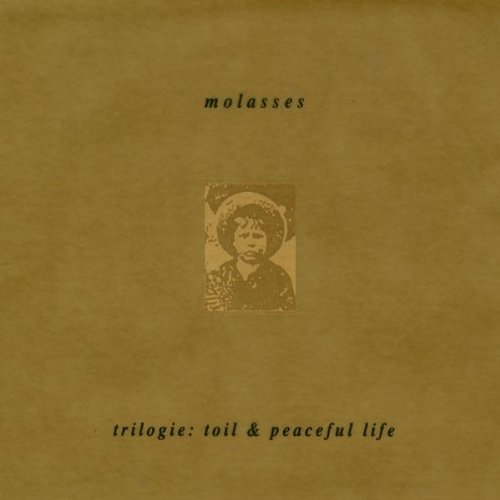Description
Molasses’ second full length, Trilogie: Toil and Peaceful Life, is a tough one to recommend because it really isn’t a full length album at all. It’s really a 14 minute single that was extended to 37 minutes. The 14 minutes comes from two (2) original soongs. Add a six minute field recording of the bells of Notre Dame as an opening track and a two minute field recording of the subways of Montréal (which actually sounds more like waves hitting the shore) as a song introduction, and the “album” is already up to 22 miinutes. Add a 15 minute rendition of an old standard, and there’s your full length album. Someone call the vellum guy; the record’s a go.
That said, those two original songs are outstanding. Molasses leader Scott Chernoff is at heart a neo-folk singer-songwriter, but being part of the new music mecca of Montréal, he is able to borrow a small army, including Sam Shalabi of The Shalabi Effect and two members of Godspeed You Black Emperor!, to moan and ache along with him. The combined effect of the army of musicians is still controlled and subdued. This is still minimal folk songwriting; the extra instruments add more power to the central melody, not more melody or clutter. The first song, “Saint Catherine (Idiot’s Waltz),” is quit similar to The For Carnation’s early EPs in its excellent use of silence, actually using silence as another instrument. The breaks in sound create more tension than an extra violin or guitar could. The second song, “Lisa’s Waltz (Running Away From Home),” is equally powerful, as all the instruments merge into one big, shivering mass, heightening the pain and fear in the lyrics about a girl escaping an abusive parent.
Combined with their extended version of “Amazing Grace,” the album’s three songs form a spiritual “Trilogie” on sin, the pain it causes, and redemption. It is powerful music, and, despite the excessive price due to the excessively deluxe packaging and Canadian tariffs, it is worth the price. Those turned on by packaging will be excited to know the album comes with hand-printed parchment inserts, a multiply-embossed three-page gatefold sleeve, and a vellum cover. Personally, I’d rather have bought the standardly packaged CD single that this “album” really is for half the price. Is brown vellum and green cardboard really that much prettier than full color glossy artwork, anyway?
(Fakejazz.com)




